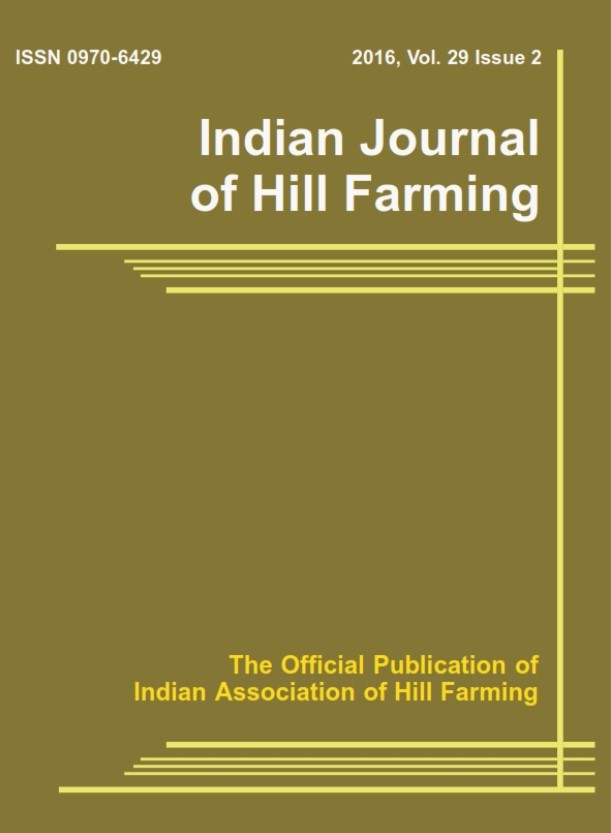Performance of different okra cultivars and insecticides in suppressing sucking pests in Assam, India
DOI:
https://doi.org/10.56678/iahf-2024.37.02.10Keywords:
Arka Anamika, , Chlorantraniliprole, , Pusa Sawani, , Split plot design, Sucking pests.Abstract
The purpose of this study was to see the effectiveness of certain insecticides and three popular okra cultivars against sucking pests of okra. The experiment was carried out at the Experimental Farm, Dept. of Horticulture, Assam Agricultural University, Jorhat, Assam during the Kharif, 2020 and the spring-summer, 2021. It was found that the lowest aphid (2.66 and 2.00 nos./3 leaves) and whitefly (0.66 and 0.33 nos./3 leaves) population was observed in treatment V1T1 (chlorantraniliprole 18.5%SC @25 gm a.i./ha + Arka Anamika) at 5 DAT in both the seasons respectively. Similarly, the treatment V3T3 (lambda-cyhalothrin 5%EC @ 15 gm a.i./ha + S-51) recorded the highest aphid and whitefly populations during both kharif (9.33 aphids and 4.00 whiteflies/3 leaves respectively) and the spring-summer (7.33 aphids and 3.00 whiteflies/3 leaves respectively). Whereas, the jassid population showed a decreasing trend up to 10 DAT in both seasons. The treatment V1T1 showed the highest and V3T3 showed the lowest reduction in the jassid population during kharif (1.00 and 6.00/3 leaves respectively) and spring-summer (0.66 and 4.00 /3 leaves respectively). Hence, the insecticide chlorantraniliprole 18.5% SC proved to be the most effective insecticide for the management of sucking pests.
Downloads
Published
Issue
Section
License
Copyright (c) 2025 Chada Anu Reddy, Anjumoni Devee, Mahesh Pathak, Saisri Manchikatla, Deepika Sorahia (Author)

This work is licensed under a Creative Commons Attribution-NonCommercial-NoDerivatives 4.0 International License.




